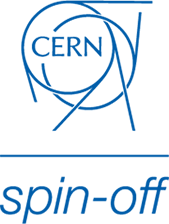St. Louis, MO, and Oslo, Norway – November 28. Concordia Seminary has implemented the TIND Integrated Library System, migrating from EBSCO FOLIO. TIND ILS is selected because of its clear, straightforward interface and data flows. Concordia Seminary joins a growing community of smaller academic and specialized libraries using TIND ILS.
University of Tulsa launches its digital collections on TIND Digital Archive
Released November 21, 2025
Tulsa, OK and Oslo, Norway – November 21, 2025. The University of Tulsa (UTulsa) has launched the new McFarlin Library Digital Collections on TIND Digital Archive (TIND DA). The new site delivers a clean, intuitive user experience, improved discovery, and stronger support for a wide range of formats—bringing together rare books, manuscripts, maps, photographs, and university archives in a unified interface that reflects the history and culture of Oklahoma and the region.
Center for Research Libraries goes live on TIND ILS for Print Archives Preservation Registry
Released November 14, 2025
Chicago, IL, and Oslo, Norway – 14 November 2025. The Center for Research Libraries (CRL) has launched its new Print Archives Preservation Registry (PAPR) on the TIND ILS platform, completing the second of three TIND systems now in production at CRL. The new PAPR serves as a modern, hosted data lake, replacing CRL’s locally built infrastructure with a scalable environment for aggregating and analyzing collective print holdings and bibliographic data contributed by more than 200 member libraries.
UNC Greensboro goes live with TIND Digital Archive and TIND Institutional Repository
Released November 07, 2025
Greensboro, NC, and Oslo, Norway – November 7, 2025. The University of North Carolina at Greensboro (UNCG) has launched Digital Greensboro, a unified platform bringing together the university’s digital collections and institutional repository. Powered by TIND Digital Archive (TIND DA) and TIND Institutional Repository (TIND IR), the new system replaces UNCG’s legacy Islandora-based and homegrown platforms and provides seamless access to the university’s scholarly, cultural, and historical content through a single portal.



